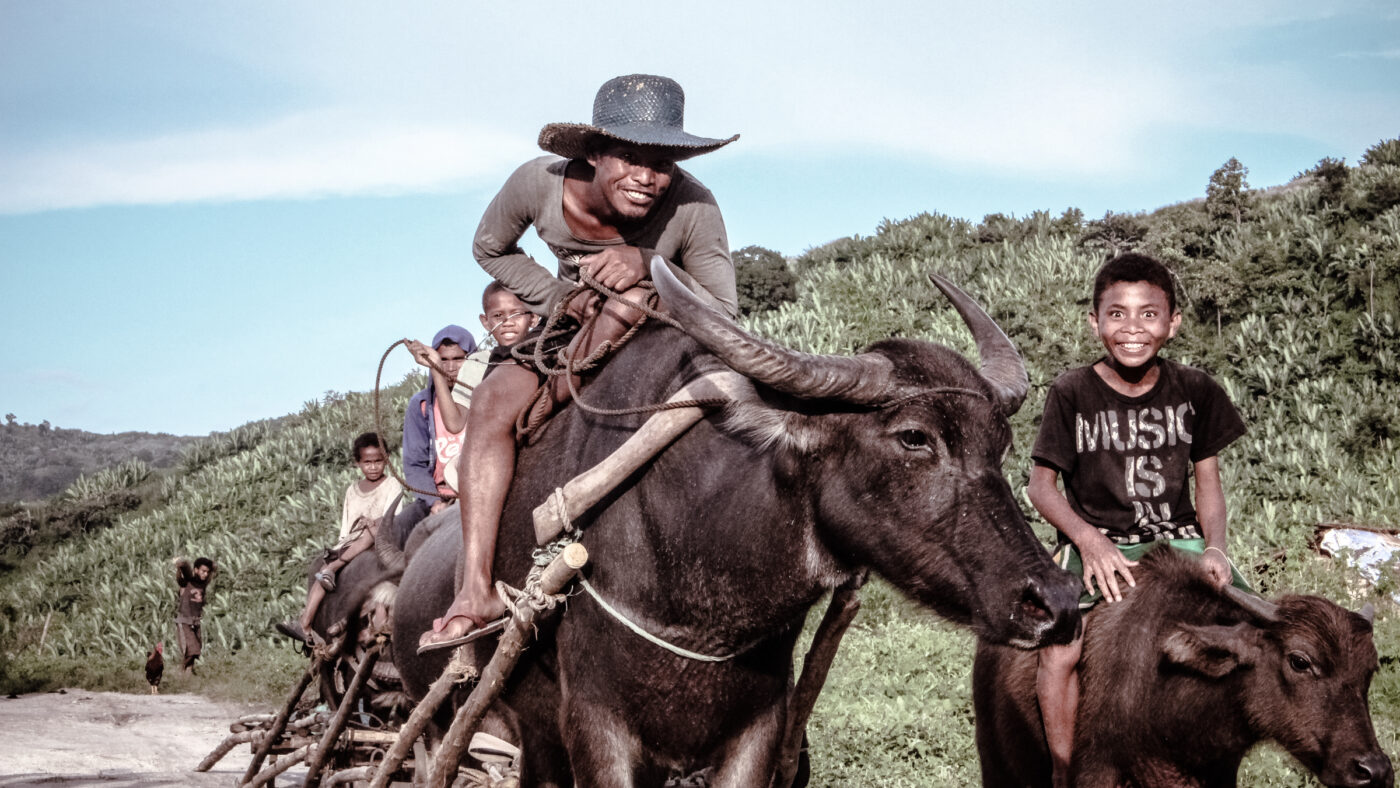TATAY JUN Sanchez of Capas, Tarlac gathers puso ng saging (banana heart) in order to sustain his family. His community also harvests gabi, kamote, ampalaya, ginger, and squash from their gasak, or self-proclaimed land. Tatay Jun shares that it takes an entire day to collect enough puso to fill a rice sack, which he could either sell for Php 100 or trade for four to five cups of rice.
As a farmer, getting rice and food should be easy for Tatay Jun. In spite of the hard work, the very least a farmer deserves should be to have no difficulties in obtaining his food supply. But this isn’t the case.
The barangay hall where Tatay Jun buys rice is a 5-hour trek from their residence, and if their harvest is not enough to sell, they have no means to purchase. To mitigate their hunger, they resort to eating the other vegetables they have planted, but this is still insufficient for their sustenance. Ironically, Tatay Jun and his family suffer from food insecurity.
The Food and Agriculture Organization identifies four main dimensions of food insecurity: physical availability, economic and physical access, food utilization (nutritional status), and stability of these dimensions over time.
A systemic problem
According to Antonio Flores, secretary-general of the Kilusang Magbubukid ng Pilipinas, the issue of land distribution is connected to the issue of food insecurity of farmers. Flores says that one hectare of land can produce 100 cavans, but after the deduction of expenditures by the landowner, only 19 cavans are left for the farmer, which he claims would only sustain him and his family for at least three months.
“’Yun ang dahilan na palaging kapos ang mga magsasaka, na tinawag na ‘the poorest of the poor’ sa kanayunan (That is the reason why farmers are always lacking, why they are called ‘the poorest of the poor’ in the countryside),” he shares.
Stories of farm workers appealing for just land distribution, such as the case of Hacienda Luisita, emphasize the disconnect between the Philippines as an agricultural country and the severe poverty farmers experience.
The fight for genuine agrarian reform began with the Comprehensive Agrarian Reform Program in 1988 under the administration of former president Corazon Aquino, followed by an extension of this program called the Comprehensive Agrarian Reform Program (CARPER). According to the Official Gazette, the program had distributed only 751,514 hectares of land, leaving 771, 795 hectares of remaining landholdings. In the Peasants Electoral Agenda forum last February 3, then-candidate and now president Rodrigo Duterte lamented the failure of CARPER because farmers still lacked the capacity and resources to make their land productive.
“The land reform was a farce not because it was not given, but the problem again is, there was no support from government,” Duterte said.
Landless farmers turn to rice traders or usereros whenever they need capital because according to Flores, they cannot apply for a bank loan. Then, the same usureros are the ones who buy the farmers’ product at prices below the market value.
Flores criticizes this exploitative relationship, citing that the National Food Authority pegs the price of rice at Php 17 per kilo, while the usureros set it at only Php 12 per kilo. When it rains and the farmers lack the facilities to keep the palay from getting wet, the price is further reduced to Php 6 or 7 per kilo.
Beyond land distribution
For Kaisahan, a non-government organization that legally assists farm workers in acquiring their land, the issue of agrarian reform and food security goes beyond the proper distribution of land.
“Ang concern niya… pagkatapos [ka] makakuha ng lupa, paano maging mas productive yung lupa para makasali at maka-contribute [ka] doon sa ekonomiya at saka doon sa supply ng pagkain immediately doon sa komunidad,” (It concerns what you will do with the land you own will so that it will become productive and you can contribute to the economy, as well as to the food supply in the immediate community),” says Anthony Marzan, executive director of Kaisahan.
Marzan recalls scenarios wherein farmers lack both the skillset and the capital to utilize their awarded property. However, Maricel Tolentino, Kaisahan’s project development officer, is quick to add that other farmers who wait for land titles are able to produce vegetables and fruits within their small home lots.
The dilemma, Marzan clarifies, is deciding what kind and how much of a crop to produce. In some cases, farmers cultivate high value crops that only contribute to household income but not to the collective food supply.
Tolentino questions the notion of ensuring household food security first before planting crops that correspond to the demand of the larger market. “Pero yung problema naman… hindi naman lahat ng bagay makukuha mo sa household security. Kailangan mo ng income kasi paano yung ibang basic needs? (But the problem there is you can’t get everything you need through household security. You also need income because what about the other basic needs?),” she says.
Inclusive support services
Equipping farmers with the resources and the skills to cultivate their land can ultimately allow them to maximize the use of their land, and this responsibility lies heavily with the government.
CARPER mandates that the government provide support to farmers through appropriate technology and research, and should provide them with adequate financial, production, marketing, and other support services. It also provides for the rights of farmers, farmworkers, landowners, cooperatives and other independent farmers’ organizations to participate in the planning, organization, and management of the comprehensive reform program.
However, Marzan says that there is a mismatch between the support offered by government and the needs of the beneficiaries.
“Halimbawa, ako ay sugarcane farmer. Ang programa nung gobyerno ay nasa rice, nasa corn, so wala akong makukuhang support (For example, I’m a sugarcane farmer. The government’s program is for rice or corn, so I don’t receive support),” he explains.
He claims that in 2015 there were 4.5 million agrarian reform beneficiaries, but only 40% have received support from the government. Some farmers have received farm inputs such as seedlings and fertilizers, while others got loans from the government. Only a small percentage of the farmers were able to avail of loans, grants for farm inputs, and even equipment such as farm-to-market roads and post-harvest facilities.
Capacity building
Strengthening the role beneficiaries play in the market as well as in food security is just as important as providing inclusive support services. Tolentino compares the transition from “farm worker” to “landowner” to a student who used to receive allowance but now has to manage a business.
When beneficiaries are unable to make this adjustment, the loss of regular income from the landlord and inability to properly manage the land can lead to leasing back the land to a private company or individual.
Marzan notes the necessity to help farmers find their role in the value chain of food production, whether it be as entrepreneurs, or as producers. He says that there are farmer beneficiaries that have more potential to become leaders and they have to be developed in order to assume these types of roles.
Seasonal farmers, Marzan explains, are the most difficult to transition because they have been accustomed to earning income from landowners. However, he maintains that more farmers have a brighter outlook.
“This time, sila na ang magpapatakbo ng buhay nila… Kaya nila ipinaglalaban ito na magkalupa sila kasi once nakuha [nila] ito, gaganda ang buhay ng pamilya nila (This time, they decide their livelihood… which is why they fight to own land because once they acquire this, the lives of their family will be better),” he says.




